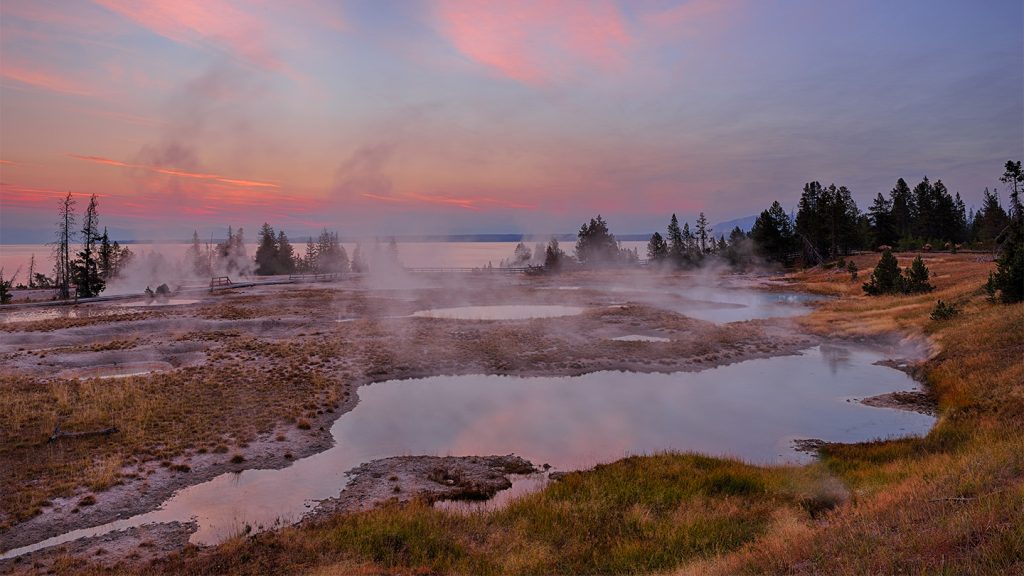Mount Ontake in Japan, a popular trekking site, experienced a tragedy in 2014 when a sudden explosion resulted in the deaths of 58 people due to falling rocks. The explosion was caused by a pool of water hidden beneath the surface of the mountain that was heated and expanded into steam, leading to a phreatic steam explosion. Similar incidents have occurred in other places around the globe, highlighting the destructive force that water expanding into steam can have in causing explosions. Explosions of this nature, whether at an active volcano like Ontake or in areas without active volcanoes, are known as phreatic or hydrothermal explosions.
Yellowstone National Park, where no magma eruption has occurred in 70,000 years, has seen numerous hydrothermal explosions over the years. Yellowstone sits atop a hot spot in Earth’s mantle, allowing heat to flow close to the surface, resulting in hot water and steam escaping through cracks in the rocks and forming geysers and hot springs. These hydrothermal systems can cause explosive events, with the potential for far greater risks than magma eruptions. Scientists have been studying the triggers of these explosions and the potential for predicting their timing, with a focus on understanding the mechanisms that lead to such catastrophic events.
Research in Yellowstone and other places experiencing large hydrothermal explosions suggests that ice retreat, earthquakes, tsunamis, and landslides can trigger explosions. Understanding the potential triggers for these explosions is crucial in assessing the risks associated with these events. Scientists have been exploring the bottom of Yellowstone’s largest lake to uncover previously unknown hot vents, hydrothermal explosion craters, and brittle geologic structures that could lead to future explosions. While Yellowstone Lake has a violent history, other parts of the park also carry the potential for large-scale explosions.
The mapping of Yellowstone Lake has revealed the presence of numerous hydrothermal vents, faults, craters, and domes that could lead to future explosions. Studying sediment cores from the lake bottom has provided insights into past explosion events, debunking previous theories about their triggers. The understanding of what might cause these explosions and the potential for multiple explosions happening simultaneously is an ongoing area of research that could help in predicting and mitigating the risks associated with hydrothermal explosions at Yellowstone National Park.
The potential for catastrophic hydrothermal explosions at Yellowstone, similar to those seen in the past, underscores the importance of continued research to monitor and understand the triggers that could lead to such events. While the chances of a massive hydrothermal explosion occurring are low, the impact of such an event could be devastating. Places like Storm Point near Yellowstone Lake are being monitored for signs of potential explosion events, and ongoing research is focused on understanding the factors that could lead to a sudden and massive hydrothermal explosion.
Scientists studying hydrothermal explosions are gaining a clearer picture of the potential triggers and mechanisms behind these events, with a focus on predicting the timing and potential impact of future explosions. With ongoing research in Yellowstone and other locations worldwide, scientists are working to assess the risks associated with hydrothermal explosions and develop strategies for early warning systems and mitigation measures. The discovery of hot vents, craters, and domes in Yellowstone and the understanding of past explosion events are helping scientists piece together the puzzle of these catastrophic events.















